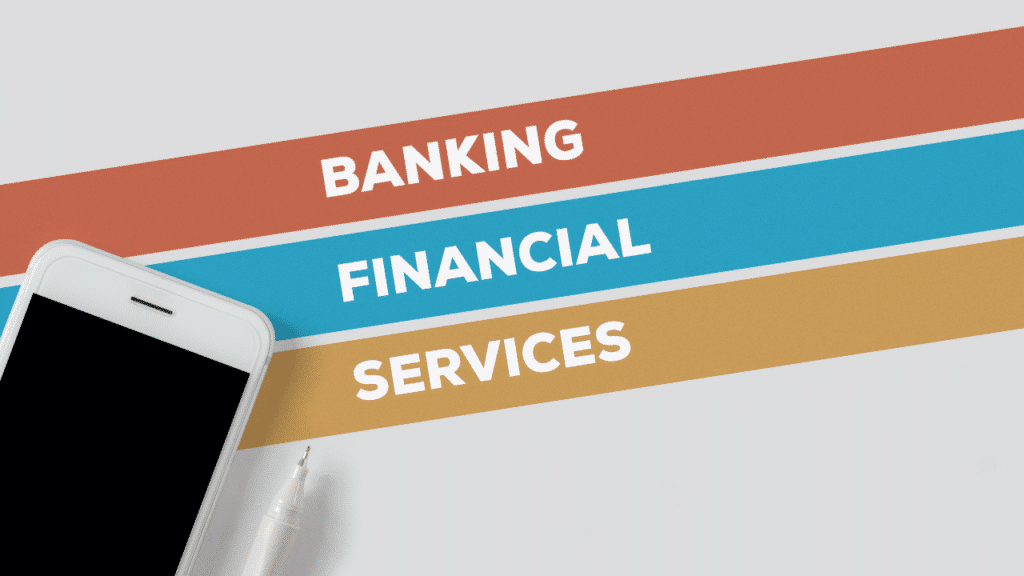In the realm of financial services marketing, Many financial services professionals find it challenging to connect with their clients in a meaningful way. Leveraging effective content marketing strategies can help you educate and engage your audience, building trust and fostering lasting relationships. By understanding your clients’ needs and providing them with valuable information, you can enhance your marketing efforts. Discover how to optimize your approach by exploring The Benefits of Content Marketing for Financial Services … and elevate your practice to new heights.
Key Takeaways:
- Targeted Content: Creating content that addresses specific client needs and interests leads to greater engagement and loyalty.
- Educative Approach: Providing educational materials empowers clients, helping them make informed financial decisions and enhancing their trust in your brand.
- Multi-Channel Distribution: Utilizing various platforms for content distribution maximizes reach and ensures your messaging connects with different audience segments effectively.

Understanding the Financial Services Landscape
Overview of Financial Services
To comprehend the financial services landscape, you must recognize its diverse nature, encompassing banking, investment, insurance, and wealth management. Each segment serves distinct consumer needs, whether you are seeking loans, savings, or investment opportunities. This complexity requires tailored marketing strategies that resonate with your target audience, ensuring you effectively communicate the value each service provides.
Key Trends in Financial Services Marketing
Landscape defining the financial services marketing field is continually evolving, making it necessary for you to stay aware of key trends. Digital transformation, personalized customer experiences, and the uptake of data analytics are reshaping how services are marketed. As clients become more informed and tech-savvy, you must adapt your approaches to maintain engagement and trust.
Financial services marketing is witnessing a shift towards omnichannel strategies, allowing you to connect with clients across various platforms seamlessly. The growing emphasis on sustainability and social responsibility means that you should be transparent in your messaging while building trust. Additionally, leveraging AI and automation can enhance personalization, tailoring communications to meet individual customer needs in real time.
Regulatory Considerations
Above all, navigating the financial services landscape requires a thorough understanding of the regulatory environment. Compliance with financial regulations not only safeguards your organization but also establishes credibility with your clients. By staying informed about laws and guidelines, you can ensure that your marketing efforts align with legal requirements while effectively reaching your target audience.
Understanding the regulatory landscape is imperative for successful financial marketing. Adapting your strategy to comply with regulations like GDPR or FINRA helps build trust and avoid potential pitfalls. By integrating compliance into your marketing framework, you’re not just protecting your firm but also reinforcing your commitment to ethical practices, enhancing your overall brand reputation.
The Role of Content Marketing
You need to understand that effective content marketing is not just a promotional tool; it serves as a way to educate and engage your clients within the financial services sector.
Definition of Content Marketing
With a focus on creating and distributing valuable, relevant content, content marketing aims to attract and retain a clearly defined audience while ultimately driving profitable customer action.
Benefits of Content Marketing for Financial Services
Marketing through content allows financial institutions to build trust and establish authority in the eyes of their clients.
Consequently, by providing insightful information through consistent content, you can foster a deeper relationship with your clients. This approach not only enhances brand loyalty but also encourages engagement, leading to higher retention rates and attracting new clients. Your ability to answer typical clients’ questions or concerns via informative content differentiates your brand from competitors.
Types of Content Formats
Before exploring into the specifics, it’s significant to note that various types of content formats can be used to reach your audience effectively:
| Content Format | Description |
| Blog Posts | Informative articles that address common financial concerns. |
| Videos | Engaging visual content that simplifies complex topics. |
| Infographics | Visually appealing data presentations that convey information succinctly. |
| Webinars | Interactive sessions that provide valuable insights on financial subjects. |
| eBooks | In-depth resources that offer comprehensive information on a specific topic. |
After exploring these types of content formats, it’s crucial to tailor your approach to align with your audience’s preferences.
Financial services such as investment firms or banks can benefit from using diverse formats to effectively communicate various financial strategies or insights. By engaging with your clients through different mediums, you can enhance understanding and retention of information.
| Format | Why It’s Effective |
| Blog Posts | Great for SEO and organic reach. |
| Videos | Ideal for visual learners and on-the-go clients. |
| Infographics | Quickly conveys complex information in understandable segments. |
| Webinars | Facilitates direct interaction and personal connection with clients. |
| eBooks | Position your brand as a thought leader in the finance space. |
After considering these formats, you can select those that best convey your message while engaging your audience effectively.

Creating an Effective Content Strategy
After establishing the need for a robust content strategy in financial services marketing, the next step is to develop a plan that drives engagement and educates your clients.
Setting Clear Objectives
Clear objectives provide direction for your content efforts, allowing you to measure success effectively. Establish specific, measurable goals that align with your overall business objectives, such as increasing brand awareness, generating leads, or improving client retention.
Identifying Target Audience
Creating a comprehensive understanding of your target audience is vital for crafting relevant content. This includes analyzing demographics, social media behavior, and the financial needs and preferences of your potential clients.
Consequently, by identifying your target audience, you can tailor your content to address their unique pain points and interests. This not only enhances engagement but also establishes your authority in the financial services sector, as clients will see your content as valuable and relevant to their situations.
Developing Buyer Personas
Around your target audience, developing buyer personas helps you to personalize your content strategy. These personas are fictional representations of your ideal clients, crafted from research and data, enabling you to understand their behaviors, motivations, and concerns.
The creation of detailed buyer personas allows you to craft specific content strategies that resonate with different segments of your clientele. This targeted approach ensures that your content addresses the distinct needs of each persona, improving relevance and engagement while guiding clients through their financial journeys effectively.
Conducting Content Audits
Content audits are vital for evaluating your existing content and identifying areas for improvement. Reviewing what you currently have will allow you to see what’s working and what isn’t, enabling you to optimize your strategy moving forward.
Understanding the impact of your current content allows you to refine your strategy, focusing on high-performing pieces while addressing gaps in your content. By regularly conducting audits, you remain attuned to your audience’s changing preferences and the evolving landscape of financial services, ensuring your content stays relevant and valuable.

Content Creation Best Practices
Now is the perfect time to enhance your financial services marketing through effective content creation. By following best practices, you can ensure that your content is both educational and engaging, ultimately driving client engagement and satisfaction.
Crafting Educational and Engaging Content
On your journey to create impactful financial content, focus on informing your audience while retaining their interest. This balance can be achieved by using clear language, real-world examples, and practical tips that resonate with your clients’ experiences and needs.
Storytelling Techniques in Financial Services
After understanding your audience, employing storytelling techniques can significantly enhance your content’s appeal. Use relatable narratives that illustrate your financial concepts and showcase real-life scenarios that exemplify your services.
The human element in storytelling helps you forge deeper connections with your clients. By sharing customer success stories or your personal journey in the financial sector, you transform complex information into engaging tales. This approach not only captivates but also motivates clients to trust you in their financial decisions.
SEO Strategies for Financial Content
Below are a few effective SEO strategies that can optimize your financial content for search engines. Incorporating relevant keywords, using descriptive titles, and maintaining a consistent publishing schedule can greatly improve your online visibility.
Services that focus on SEO play a vital role in attracting potential clients. By employing keyword research tactics, optimizing meta descriptions, and creating backlinks, you can drive targeted traffic to your content. Engaging in regular audits of your SEO performance will keep your strategies aligned with current search trends, ensuring you reach your audience effectively.
Leveraging Multimedia
Financial topics can sometimes come across as dry or complex, but leveraging multimedia can help you convey your message more dynamically. Use images, infographics, videos, and podcasts to complement your written content and provide a diverse learning experience for your audience.
But it’s important to maintain a balance. Visuals and audio should enhance your message rather than distract from it. By thoughtfully integrating multimedia elements into your financial content, you can improve engagement and help your audience grasp complex concepts, making your services more approachable and relatable.
Distribution and Promotion of Content
Many financial professionals struggle to distribute and promote their content effectively. Choosing the right channels is crucial to reach your target audience. You need to consider where your clients spend their time online and select platforms that align with your content strategy. Assess the demographics of each channel, whether it’s social media, email, or industry-specific forums, to ensure that your message resonates with the right audience.
Choosing the Right Channels
Promotion plays a key role in the success of your content marketing efforts. Utilize a mix of channels that best suit your audience’s preferences and behaviors. This will ensure that your messages reach potential and existing clients consistently and effectively, allowing you to foster better relationships.
Social Media Strategies
An effective social media strategy can enhance your content’s visibility and engagement. Utilize platforms like LinkedIn, Facebook, and Twitter to share your insights, articles, and updates. Tailor your messaging according to the platform’s nature to spark conversations and strengthen connections with your audience.
Even beyond sharing your content, social media offers you the chance to interact and engage directly with your audience. Host live Q&A sessions, share client testimonials, and encourage discussions around trending financial topics. By positioning yourself as a thought leader in these spaces, you can build trust and loyalty, which is vital in the financial services sector.
Email Marketing Tactics
Media channels like email remain powerful tools for promoting your content. Create segmented email lists to tailor messages to different client demographics and interests. This ensures your content is relevant and personalized, leading to higher open and click-through rates.
Further, consider designing engaging newsletters that highlight your latest content, industry news, or personalized offers. Use clear calls-to-action to drive your audience towards further reading or consultations, thereby enhancing conversions. Consistent and value-driven email marketing can keep your services top-of-mind for clients.
Collaborating with Influencers and Partners
With collaboration, you can amplify your content’s reach by partnering with influencers and other organizations in the financial sector. This expands your audience and enhances credibility, as followers of these partners are likely to trust your expertise as well.
Collaborating with influencers allows you to tap into their established networks, providing access to a larger pool of potential clients. Consider joint webinars, co-authored articles, or even social media takeovers to introduce your insights to their audience. This creates a win-win situation, enhancing your visibility while offering valuable information to those already interested in your services.
Measuring Content Marketing Success
Keep in mind that measuring the success of your content marketing efforts is important to refining your strategy and achieving your goals. Tracking performance enables you to see which pieces resonate with your audience and which do not, allowing you to allocate resources more effectively.
Key Performance Indicators (KPIs)
Around your content marketing efforts, you should focus on key performance indicators (KPIs) that reflect your overall objectives. This includes metrics such as website traffic, engagement rates, lead generation, and conversion rates. By monitoring these indicators, you can gauge the effectiveness of your content in educating and engaging your clients.
Tools for Measuring Content Effectiveness
After establishing your KPIs, it’s important to utilize the right tools for measuring your content effectiveness. Various analytics tools, including Google Analytics, social media insights, and marketing automation platforms, can help you track and analyze your content’s performance. Each tool offers different features that provide valuable data to inform your marketing decisions.
Consequently, selecting the appropriate tools will allow you to gather comprehensive insights into how your content is performing across multiple channels. By leveraging these analytics resources, you can evaluate various metrics, such as user engagement, click-through rates, and audience demographics, empowering you to make informed adjustments to your content strategy.
Analyzing and Adjusting Strategies
Adjusting your strategies based on your analysis is vital to enhancing your content marketing efforts. Regularly reviewing performance data will help you identify trends and patterns, enabling you to adapt your approach to better suit your audience’s needs.
Measuring your content’s impact is an ongoing process that demands consistent analysis and adjustment. By routinely evaluating the results of your publishing efforts, you can fine-tune your messaging, explore new formats, and optimize distribution channels. This iterative process ensures that your content marketing strategy remains effective and continues to engage your clients successfully.
Final Words
To wrap up, leveraging effective content marketing strategies is important for you in the financial services industry. By focusing on educating and engaging your clients, you can build trust and foster lasting relationships. Tailor your content to meet the specific needs and preferences of your audience, ensuring that you provide real value. For in-depth insights and actionable strategies, you can explore A Complete Guide to Content Marketing for Financial …. Empower your marketing efforts with the right content today.
FAQ
Q: What is financial services marketing and how does content play a role?
A: Financial services marketing refers to the strategies and tactics financial institutions use to promote their products and services to clients. Content marketing, in particular, involves creating and sharing valuable, relevant content to educate potential customers and engage them effectively. This approach helps build trust and authority, positioning the firm as a knowledgeable leader within the industry.
Q: How can financial services firms measure the effectiveness of their content marketing efforts?
A: Financial services firms can measure content marketing effectiveness using various metrics. Key performance indicators (KPIs) include website traffic, engagement rates (likes, shares, comments), lead generation, conversion rates, and customer feedback. Tools such as Google Analytics and social media insights can provide data on user behavior and content performance, informing future marketing strategies.
Q: What types of content are most effective for engaging clients in the financial services sector?
A: Effective content types include educational articles, infographics, videos, webinars, and podcasts. These formats allow firms to break down complex financial topics and present them in an easily digestible manner. Additionally, case studies and client testimonials can be powerful in demonstrating real-world applicability and success, thereby enhancing client engagement.
Q: How can financial institutions ensure their content remains compliant with regulations?
A: To maintain compliance, financial institutions should work closely with their legal and compliance teams when developing content. It’s crucial to stay updated on industry regulations and guidelines. Regular training for marketing staff on compliance issues, using standardized templates for regulated content, and conducting audits of published materials can help mitigate risks associated with non-compliance.
Q: What strategies can be employed to promote financial content effectively?
A: Promoting financial content can involve several strategies, including search engine optimization (SEO) to improve visibility in search results, leveraging social media platforms to reach broader audiences, and using targeted email marketing campaigns to distribute content directly to interested parties. Collaborating with influencers in the finance space and utilizing paid advertising can also enhance content reach and engagement.








